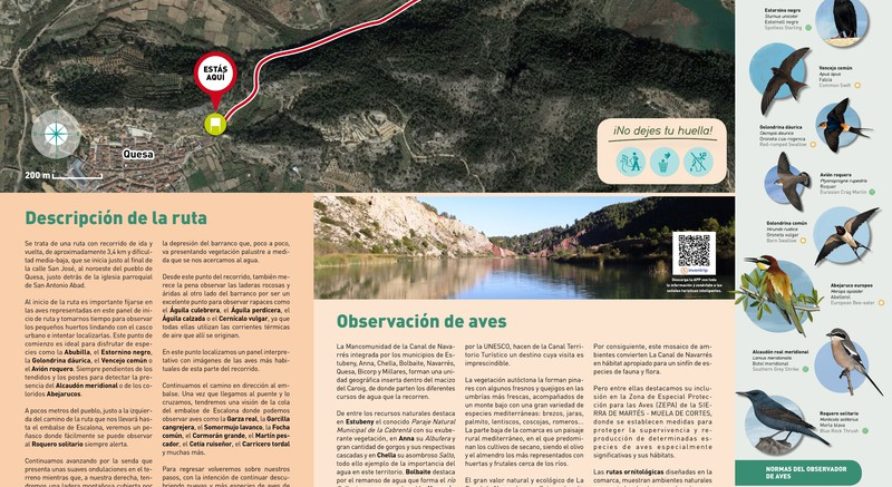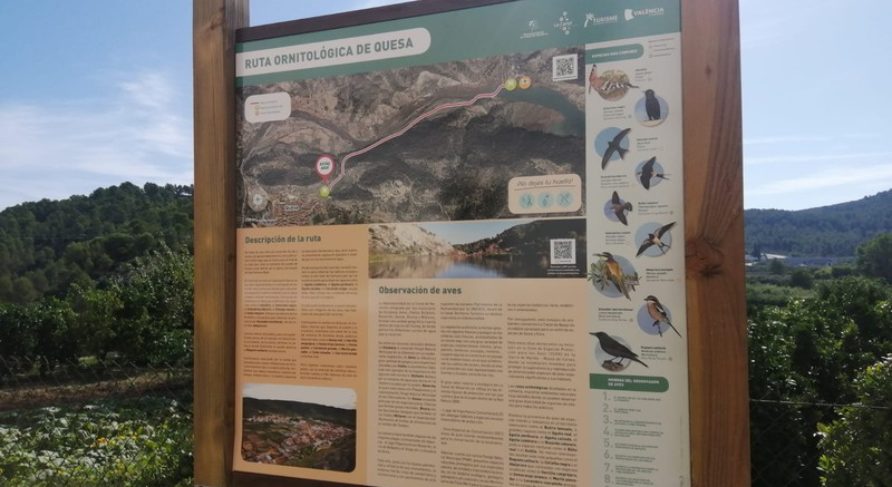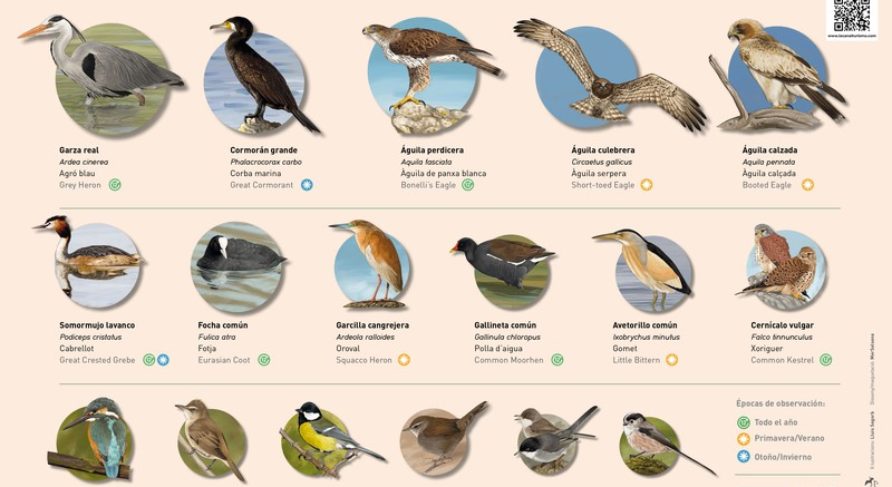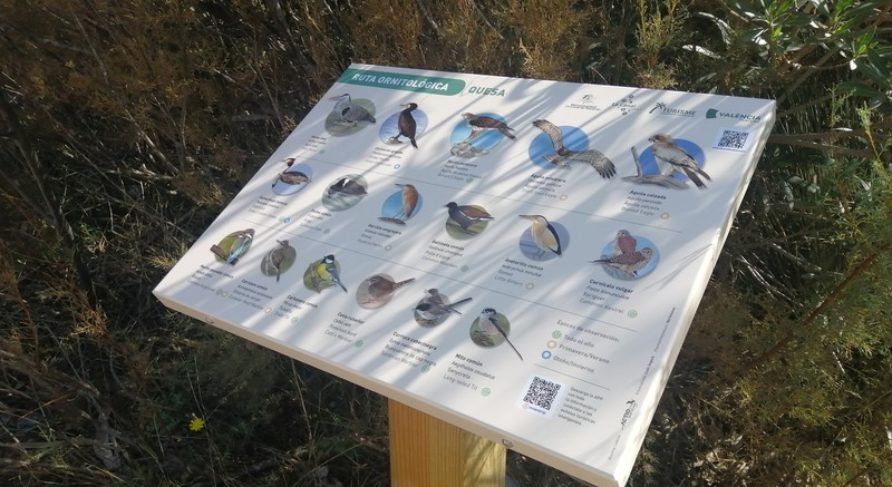BTT Cruz de la Ceja-Fuente El Pino
Very pleasant route, a 23 km ‘stroll’, ideal for gravel and gentle mountain biking. Without significant slopes, tracks in good








This is a round trip route of approximately 3.4 km with a medium-low difficulty level, starting just at the end of San José street, northwest of the town of Quesa, just behind the parish church of San Antonio Abad.
At the beginning of the route, it is important to pay attention to the birds represented on the starting panel and take time to observe the small orchards bordering the urban area and try to locate them. This starting point is ideal for enjoying species such as the Hoopoe, the Common Starling, the Red-rumped Swallow, the Common Swift, or the Crag Martin. Always on the lookout on the power lines and poles to detect the presence of the Southern Grey Shrike or the colorful European Bee-eaters.
A few meters from the town, just to the left of the path towards the Escalona reservoir, we will see a cliff where the vigilant Black Redstart can be easily observed.
We continue along the path, which presents gentle undulations in the terrain, while to our right, we will have a mountainous slope covered by Mediterranean forest, and to our left, the depression of the ravine, which gradually presents marsh vegetation as we approach the water.
From this point of the route, it is also worth observing the rocky and arid slopes on the other side of the ravine, as it is an excellent point for observing birds of prey such as the Short-toed Snake Eagle, the Bonelli’s Eagle, the Booted Eagle, or the Common Kestrel, as they all use the thermal air currents that originate there. At this point, we find an interpretive panel with images of the most common birds in this part of the route.
We continue on the path towards the reservoir. Once we reach the bridge and cross it, we will have a view of the tail of the Escalona reservoir where we can observe birds such as the Grey Heron, the Little Egret, the Great Crested Grebe, the Eurasian Coot, the Great Cormorant, the Common Kingfisher, the Eurasian Reed Warbler, the Sedge Warbler, and many more.
To return, we will retrace our steps, intending to continue discovering new and more bird species in this wonderful environment.
Very pleasant route, a 23 km ‘stroll’, ideal for gravel and gentle mountain biking. Without significant slopes, tracks in good
With this route, you can explore the mountains of the Macizo del Caroig and the Muela de Cortes by bike.
Pay attention to the +1245 meters of elevation gain for less than 30 km. The first part offers spectacular views
Tour around the entire area of Chella. The first half goes through the eastern part until Km 8, where it
Copyright © 2023. La Canal de Navarrés. All rights reserved.
Do not hesitate to contact us for any further information.
This website uses cookies so that we can provide you with the best user experience possible. Cookie information is stored in your browser and performs functions such as recognising you when you return to our website and helping our team to understand which sections of the website you find most interesting and useful.
Strictly Necessary Cookie should be enabled at all times so that we can save your preferences for cookie settings.
If you disable this cookie, we will not be able to save your preferences. This means that every time you visit this website you will need to enable or disable cookies again.